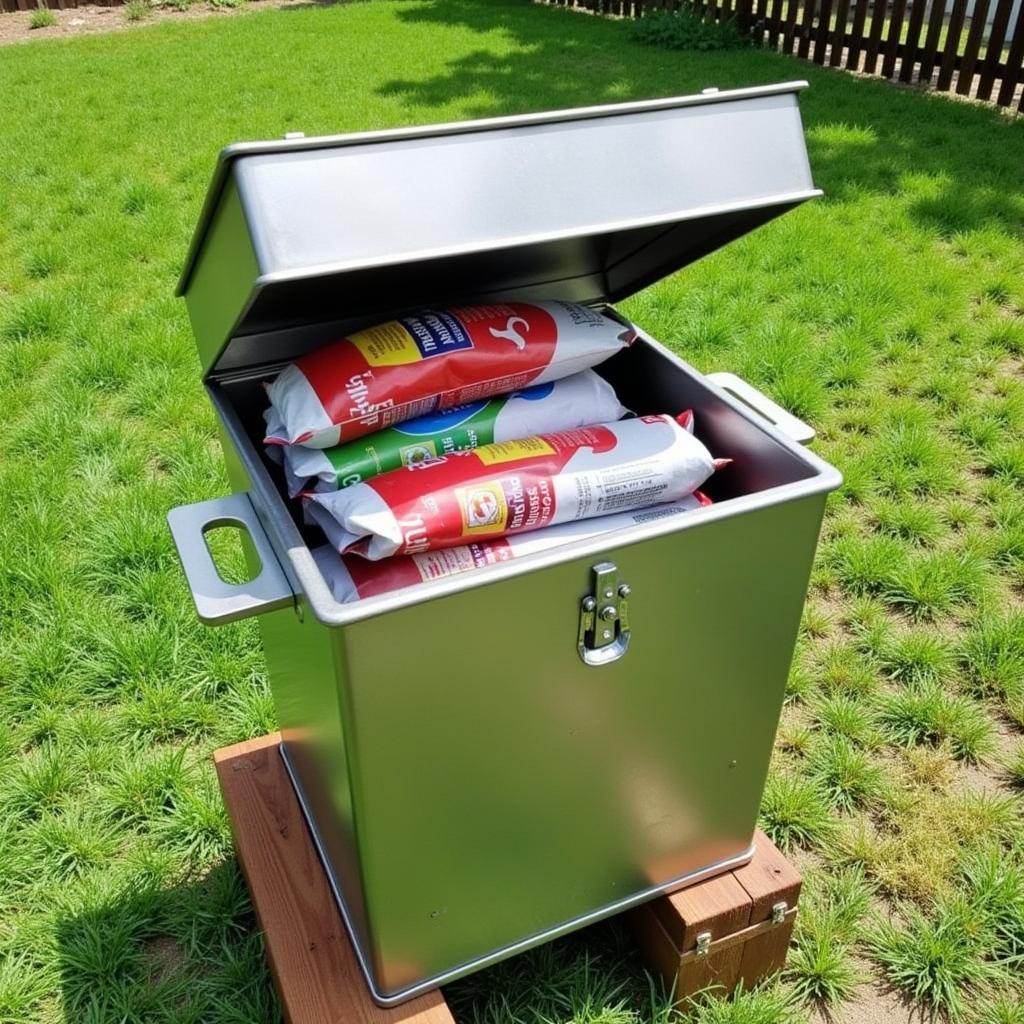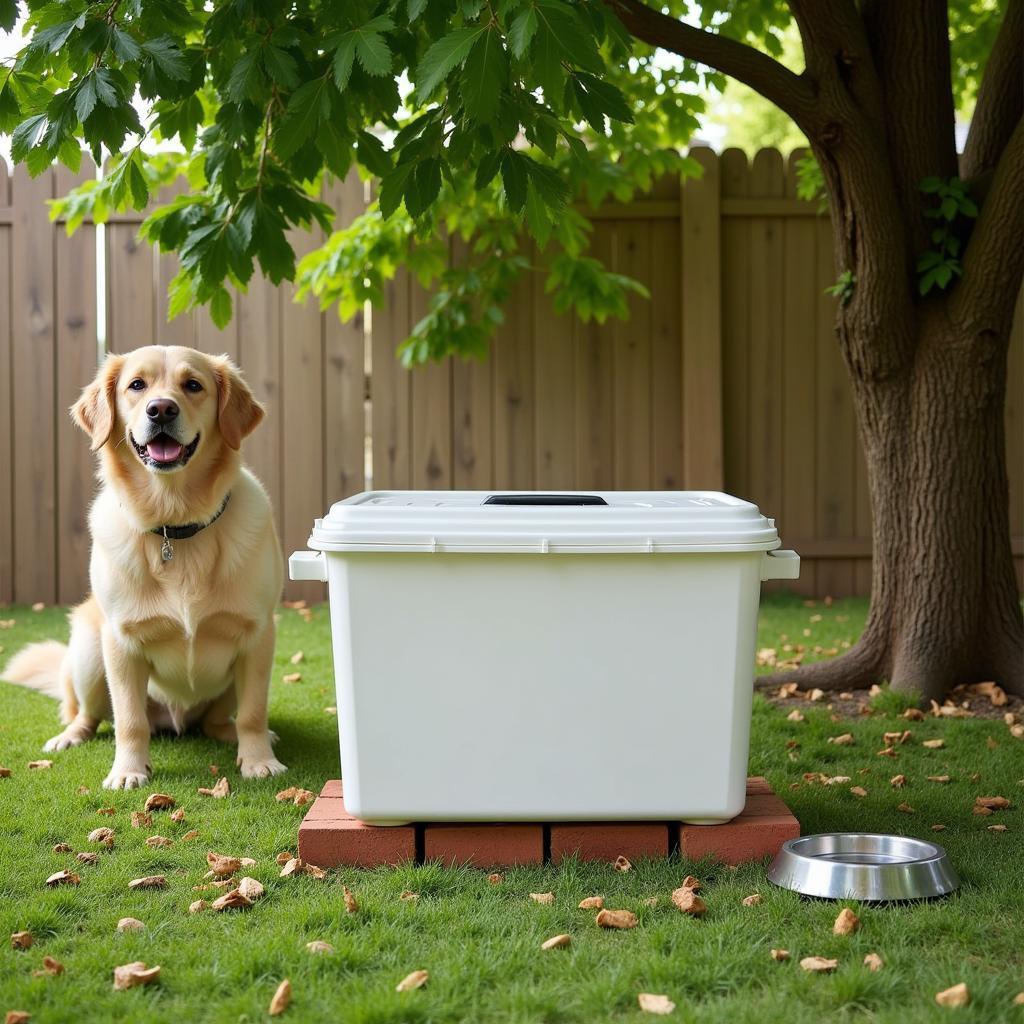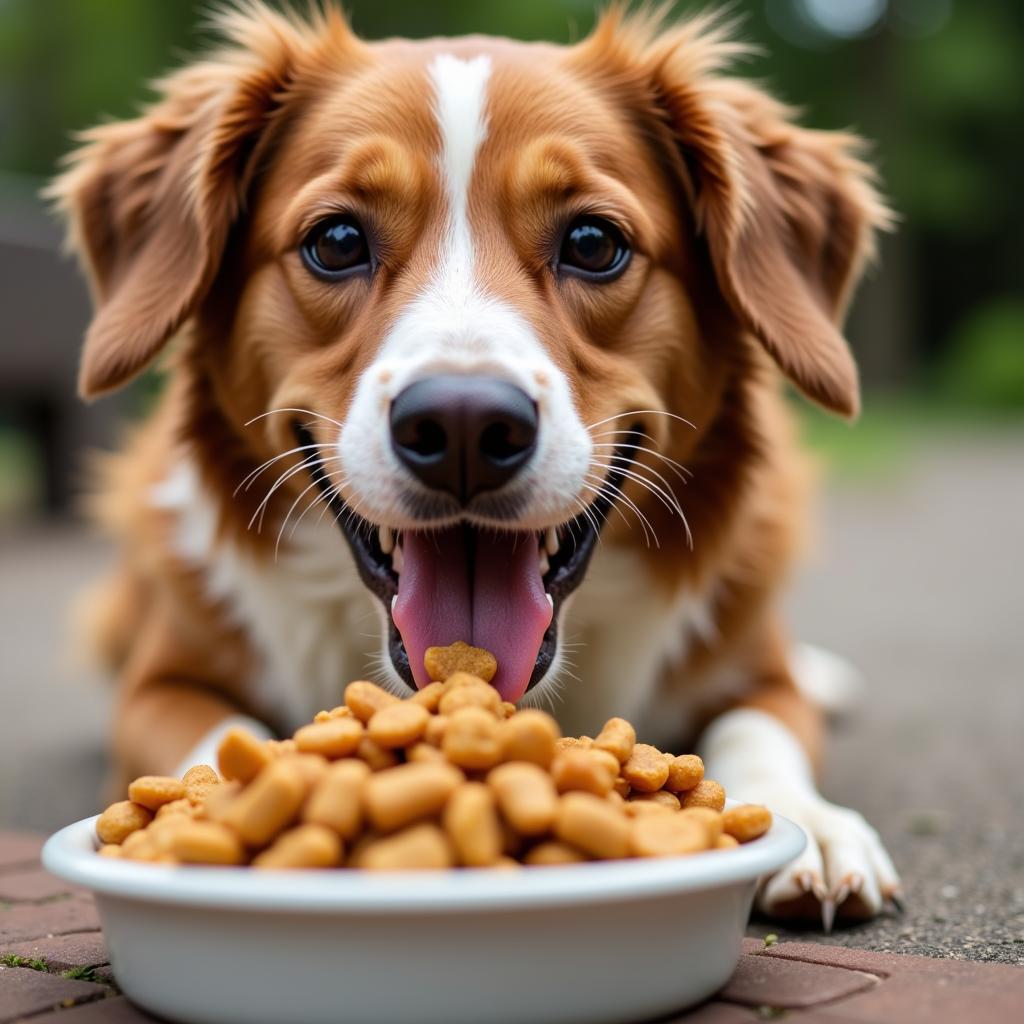Storing your dog’s food outdoors can be a great space-saver, especially if you have a large breed pup who goes through kibble quickly. However, doing so requires careful consideration to ensure the food stays fresh, palatable, and safe from pests. This guide will cover everything you need to know about Outdoor Dog Food Storage, from choosing the right container to pest prevention strategies. Let’s dive in!
Choosing the Right Container for Outdoor Dog Food Storage
The first step to successful outdoor dog food storage is selecting a suitable container. Consider factors like size, material, and airtightness. Metal containers are durable and pest-resistant, making them an excellent choice. Plastic containers are another option, but ensure they are food-grade and BPA-free. Avoid using cardboard or paper bags for long-term storage as they are easily penetrated by pests and moisture. A tight-fitting lid is crucial, no matter the material, to keep out moisture, insects, and rodents. Having a dedicated food guard can also be a great help.
What size container should you choose? This depends on how much food your dog consumes and how often you buy kibble. For larger dogs or bulk purchases, consider a larger container, even if it seems excessive. It’s better to have extra space than to constantly refill a small container.
 Metal Dog Food Storage Container Outdoors
Metal Dog Food Storage Container Outdoors
Protecting Your Dog’s Food from Pests
Storing dog food outdoors means you’ll need to take extra precautions against pests. Insects, rodents, and even wildlife can be attracted to the smell of kibble. Here are some proven pest prevention strategies:
- Elevate the container: Keep the container off the ground using a raised platform or bricks to deter insects and rodents.
- Regularly clean the area: Sweep or hose down the area around the storage container to remove spilled food and crumbs.
- Use airtight containers: A tight-fitting lid is your first line of defense against pests.
- Consider pest repellents: Natural pest repellents can be placed around the storage area, but always ensure they are safe for pets. Thinking about bulk long term food storage for your pet? These tips apply there too!
Dealing with pests like copra beetle in dog food can be a real hassle. Taking preventative measures will save you the headache of dealing with contaminated food.
Maintaining Food Freshness in Outdoor Storage
Temperature fluctuations and humidity can affect the quality and freshness of dog food stored outdoors. Here’s how to maintain kibble freshness:
- Avoid direct sunlight: Direct sunlight can degrade the nutrients in dog food. Store the container in a shaded area.
- Keep it cool and dry: A cool, dry location is ideal for storing dog food. Avoid storing food in areas prone to dampness or excessive heat.
- Check the expiration date: Regularly check the expiration date on the dog food bag and rotate your stock accordingly. First in, first out is a good rule of thumb. Proper food storage will help ensure your furry friend enjoys a nutritious meal every time. Just like a food serving cart keeps food organized inside, proper outdoor storage does the same outside.
 Dog Food Storage Container in a Shaded Area
Dog Food Storage Container in a Shaded Area
What is the best way to keep ants out of outdoor dog food?
Keep the container elevated and clean the surrounding area regularly. Consider using ant baits strategically placed away from your pet’s reach.
How often should I clean my dog food storage container?
Cleaning your container monthly is a good practice to prevent bacterial growth and maintain food freshness.
“Proper outdoor storage ensures your dog enjoys a healthy and delicious meal, regardless of the weather.” – Dr. Emily Carter, DVM
Conclusion
Outdoor dog food storage can be a convenient and practical solution, as long as you take the necessary steps to protect the food from pests and maintain its freshness. By choosing the right container, implementing pest prevention strategies, and storing the food in a suitable location, you can ensure your furry friend has access to nutritious and palatable kibble year-round. Remember, proper outdoor dog food storage not only saves space but also safeguards your pet’s health. Want to learn more about keeping food fresh? Check out our guide on where do you buy freeze dried food.
 Happy Dog Eating Kibble from Bowl
Happy Dog Eating Kibble from Bowl
FAQ
- What’s the best material for an outdoor dog food container? Metal or heavy-duty plastic are ideal for their durability and pest resistance.
- Can I store dog food in the garage? Yes, but ensure it’s in a sealed container and away from chemicals or other potential hazards.
- How can I prevent rodents from accessing my dog’s food? Elevate the container and keep the surrounding area clean.
- Will temperature changes affect dog food stored outdoors? Yes, extreme temperatures can degrade the quality and freshness of the food.
- How often should I replace my dog’s food storage container? Replace the container if it becomes cracked, damaged, or infested with pests.
- What are some natural pest repellents for outdoor dog food storage? Peppermint oil, bay leaves, and diatomaceous earth are pet-safe options.
- Is it okay to store open bags of dog food outdoors? No, open bags are vulnerable to pests and moisture. Transfer the food to an airtight container.
If you need further assistance, please contact us. Phone: 02437655121, Email: [email protected]. Or visit us at 3PGH+8R9, ĐT70A, thôn Trung, Bắc Từ Liêm, Hà Nội, Việt Nam. We have a 24/7 customer service team ready to help.